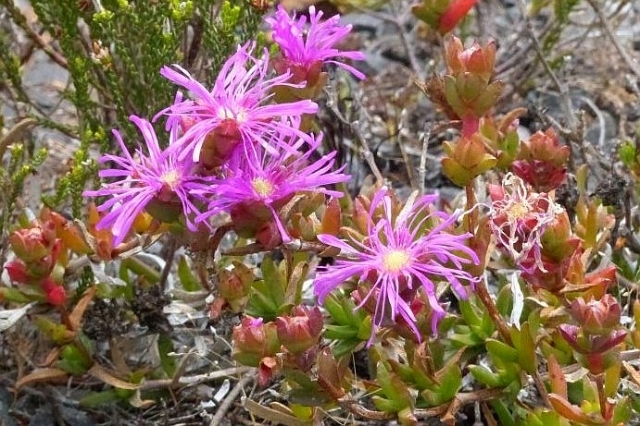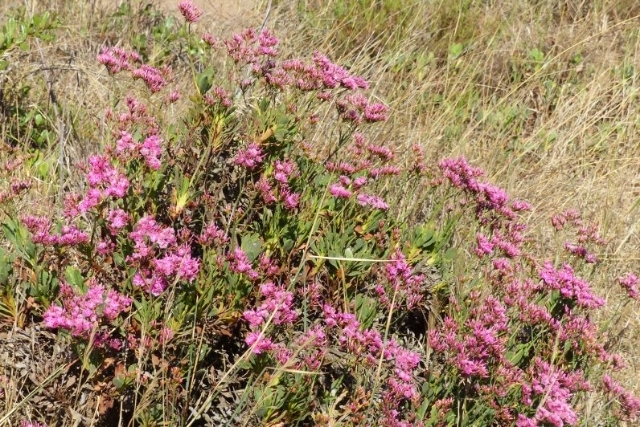Untidy Spoonfig Erepsia sp. possibly
Erepsia anceps
Order: Caryophyllales. Family: Aizoaceae (Mesembryanthemaceae)

© arks

© arks
Table Mountain National Park, Cape Point
The
Erepsia genus of Western and Eastern Cape vygies are named for their hidden reproductive parts. The word origin of
Erepsia is Greek, erepsis, meaning I hide myself. The vital parts of the flowers are hidden among a multitude of staminodes in the flower centres. Staminodes are sterile or abortive stamens, frequently (as in this case) resembling stamens without anthers. Sometimes, however, staminodes resemble petals, as in canna flowers.
Several of the
Erepsia plants in the Western Cape, where many of them are endemic, are known as altydvygies, because the flowers remain open day and night (unlike many other mesemb species). They are thus pollinated either by day or night insects, arrangements varying from species to species. The leaves of erepsias are characteristically three-sided, sharply angled at the edges. This is similar to some other mesembs, such as some of the delospermas.
Erepsia leaves always have sharp, somewhat thorny tips. The leaf surfaces are smooth covered by a waxy layer. The stems are smooth. The staminodes consisting only of filaments, conceal the stamens partly or totally, depending on the species. The ovary in the centre at the base of the flower is concave, i.e. hollow, causing the staminodes arranged around it to curve inwards and over it. There are 27 species of
Erepsia.
Description
Erepsia anceps has flowers with narrow, spoon-shaped, pink or magenta petals and yellow centres. What one sees in the flower centre is a dense cluster of staminodes (infertile stamens without anthers). The branches of the plant grow in a semi-erect habit into a small shrublet to about 30 cm in height. The leaves are sparsely scattered along the stems with single flowers appearing at branch ends. Blooming occurs in summer into autumn, often after fires. As with some other species of the genus, the plant’s reseeding benefits greatly from fires.
Distribution
South African endemic in the Western Cape, found in the far south-western parts of the Cape, from the Peninsula outwards.
Habitat
Lower sandstone slopes.
 © nan
© nan


 © arks
© arks © arks
© arks © arks
© arks © arks
© arks © arks
© arks © arks
© arks © harrys
© harrys © arks
© arks © arks
© arks